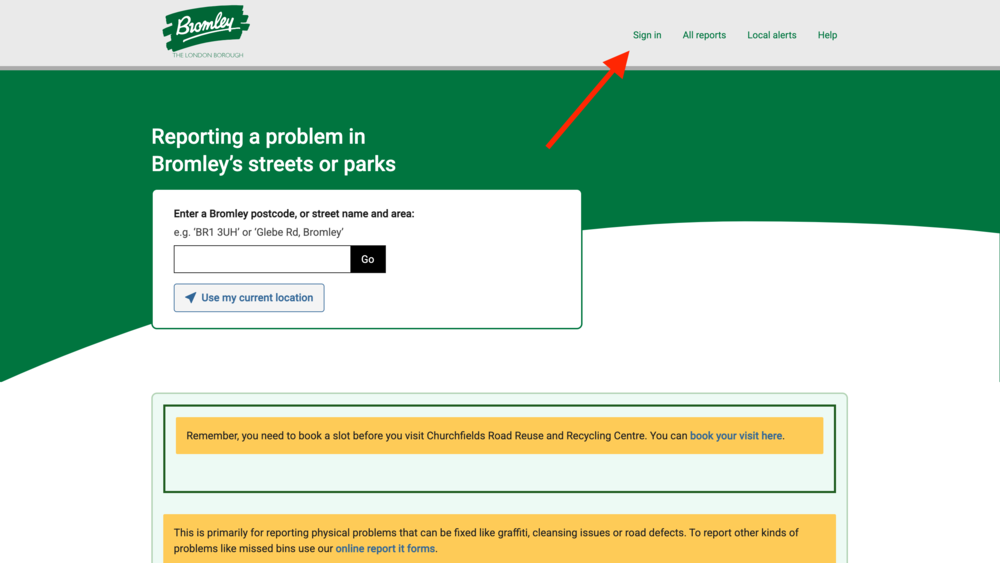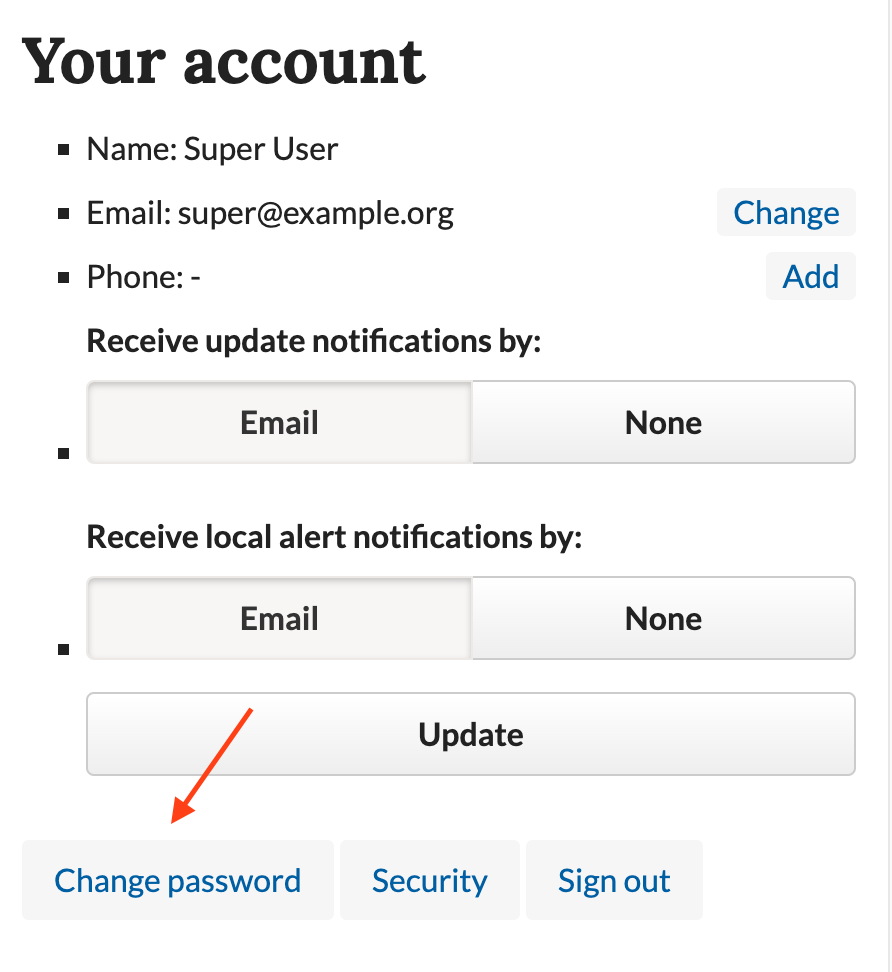FixMyStreet Pro staff user accounts
This section of the manual is designed to help you understand how staff accounts work on FixMyStreet Pro.
Important notice
This guide provides a general overview of each of FixMyStreet Pro’s standard features. There may be small differences in how the software functions for different authorities, depending on how you use the service, the integration(s) you have selected, and the individual processes reflected in your workflow.
Please speak to your Administrator if you have questions about functionality not covered specifically in the below guidance. If you are the Administrator and you need extra help, please open a ticket on Freshdesk.
Logging in
Staff accounts are managed by Administrator-level users.
Contact your Administrator/s if you encounter any problems logging in, or any other aspect of account management.
How to log in
Go to your authority’s FixMyStreet Pro website, click on ‘Sign in’ (usually located in the top navigation bar) and enter your email address.

You’ll be invited to enter your password if you already have one. If not, select the option to receive a link to sign in via email.
Decide on a password and enter it in the password box, then click ‘Sign in’. A confirmation email will be sent to the email address you provided.
If you have an integration into a Single Sign-on system, you will be able to choose this as a method of logging in.

Password security
Your password must contain 8 or more characters, and must not be one of the most commonly used combinations (such as ‘Password’ or ‘123456’).
Please note: Your organisation may also have password policies which you are expected to abide by.
Two-factor authentication
Any staff user can choose to set up two-factor authentication on their account.
To do this, they will need an app on their phone that can generate time-based authentication keys, such as Google Authenticator or a password manager.
From the ‘Your account’ page, select ‘Security’.

From here choose ‘Activate two-factor authentication’ to receive a QR code to scan with the app.
Please note: If you wish your organisation to have mandated two-factor authentication, please get in touch via the helpdesk.
How to log out
Click on ‘Your account’ in the top menu, then click ‘Sign out’.

If you are using a device or computer that is shared with others, we advise always logging out at the end of your session.
Changing your password
You can change your password at any time by clicking on ‘Your account’ in the top menu bar and selecting the ‘Change password’ option.

Permissions and Roles
Staff accounts can be assigned a variety of permissions or roles, depending on each team member’s needs or responsibilities.
Roles and permissions can differ vastly between installations of FixMyStreet Pro because different authorities use the solution in different ways.
Permissions can be combined in any way, grouped into custom roles, or applied individually. You can tailor your permissions and roles to best reflect your team’s operations. See the Administrating staff accounts section.